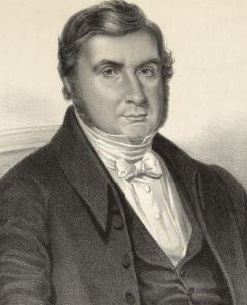1817-1822 Beddgelert, Wales Revival (over 4 locations)
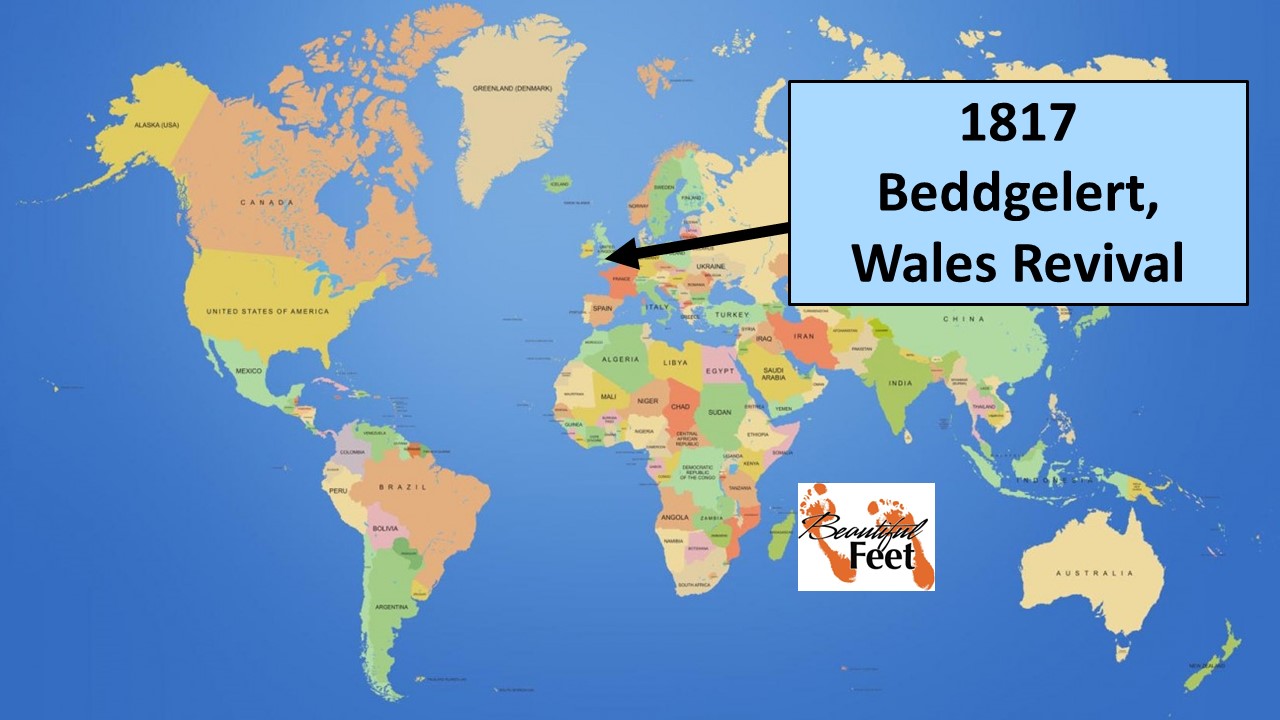
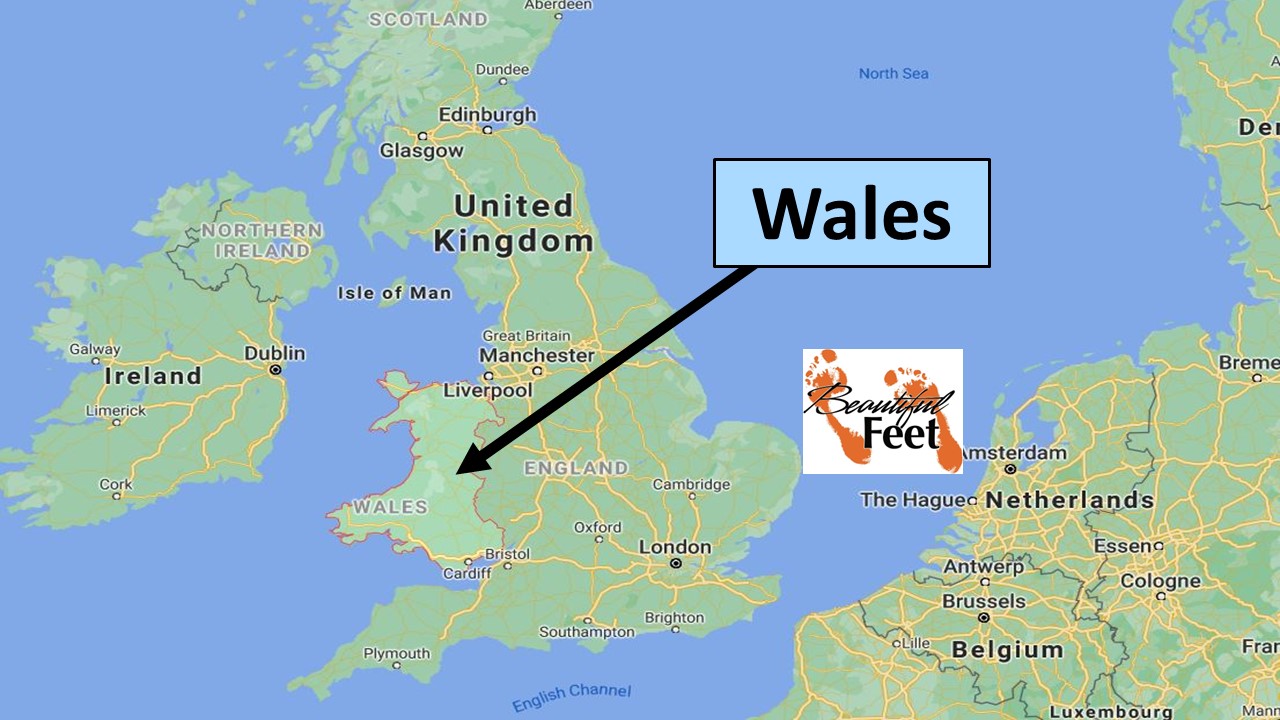
Introduction
Wales has been the recipient of God’s favor and blessings throughout the years. Evidence of this is seen in the numerous documented revivals this land has experienced. From 1762 to 1862, Wales went through no fewer than 14 seasons of revival.
One of the most famous revivals, the 1904-1905 Welsh Revival, impacted the entire globe. Even today, reading accounts of that revival, it stirs something deep within the reader’s heart, kindling a profound desire for such an event to occur again.

No fewer than 14 significant revivals in 100 years
Conditions Prior to the Revival
Prior to the 1817 revival, the entire Beddgelert area was said to have been:
notorious for its worldliness, immorality, drunkenness, and indifference to religion.
This region was known to many ministers of the gospel as one of the hardest, most difficult places of all–so much so that it became a proverb among many:
Such and such a place is as hard as Beddgelert.
Initial Groundwork for Revival
In the early 1800s, a Sunday School was started at Capel y Nant, a church in the small village of Nanhoron. For a full 20 years prior to the revival, this Calvinistic Methodist Church maintained a steady membership of around forty. The church was in great need of revival.
In the autumn of 1815, an elder at Capel y Nant, who was also the superintendent of the Sunday School, began teaching a catechism book to the children. The same book, with its 271 questions and answers, was also used among the adults.
Extraordinary Prayer and the Revival’s Foundation
When the summer of 1816 arrived, the year of teaching the catechism was producing positive responses from the people. This elder then called the congregation together and challenged them to pray daily for power to accompany the preaching of the Word of God and for revival to come to the church.
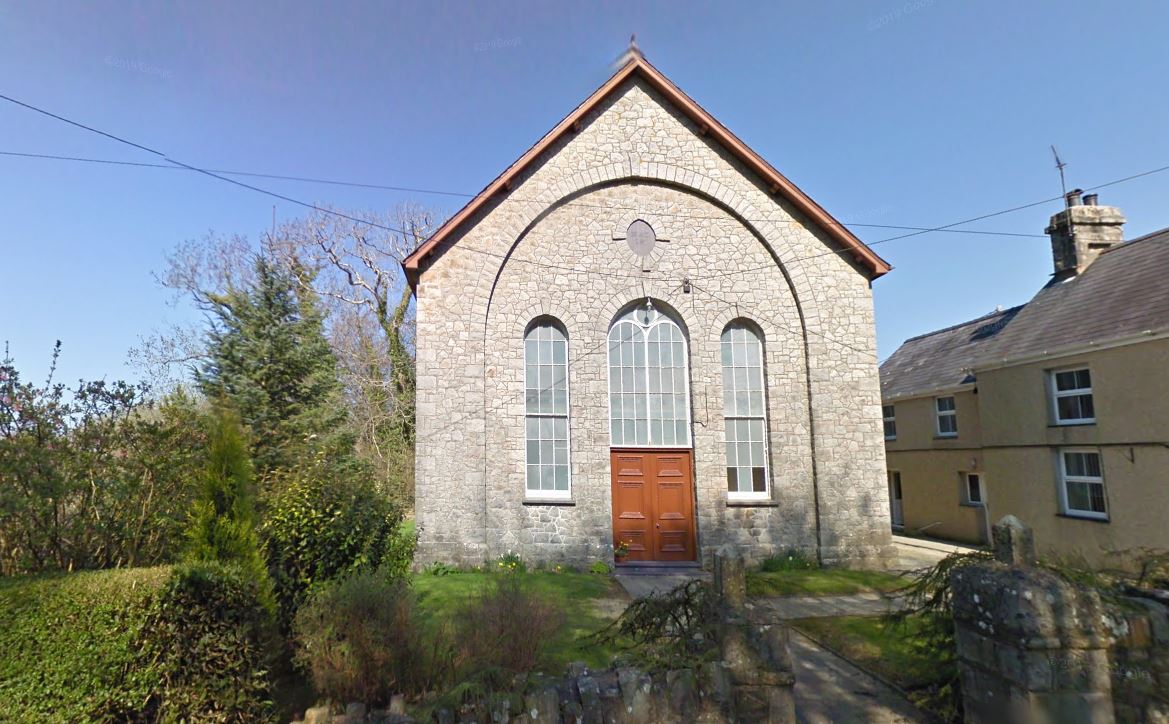
Capel y Nant today, in the village of Nanhoron. This building was built in 1877, replacing the original constructed in 1788.
The congregation’s willingness to pray, both in private and corporately, was overwhelming, with the burden for prayer also affecting the youth and children.
It was in the winter of 1816, at the Calvinistic Methodist Church, that a boy found himself with time on his hands between the conclusion of the 2 P.M. Sunday preaching service and the start of the Sunday School, which convened in the late afternoon or evening. The boy decided to stay hidden away in the balcony of the church at the conclusion of the services and spend several hours in prayer for the revival of the church. He continued doing this alone on Sundays, and eventually, a girl saw him and joined him.
In time, other children joined them, and a spirit of prayer was poured out upon them. This time of prayer was so enjoyable and anticipated that they not only met on Sundays, but also during the middle of the week for prayer.
The adults also had a tremendous burden for prayer, with some of them even spending entire nights in prayer. By January 1817, a spirit of prayer had consumed the people, and both corporate and private prayer were given prioritized attention. The result was evident: people were more inclined to attend regular services and listen closely to what was being said.
Results of the Prayers
During the church services, the ministry of the Word of God was accompanied with unusual power and authority. In one church service, the girl who had joined the boy in the church balcony for prayer began openly weeping, and then that weeping transitioned into joy-filled praise. Others joined her, and the entire congregation felt the tangible presence of God.
► Within a few weeks there were at least 20 conversions.
► As the weeks progressed, more conversions occurred among the young and the old.
► Conviction of sin struck those in the community as they were on the job, along the roads, or anywhere in the normal course of the day.
► The love of God permeated the church and the entire community.
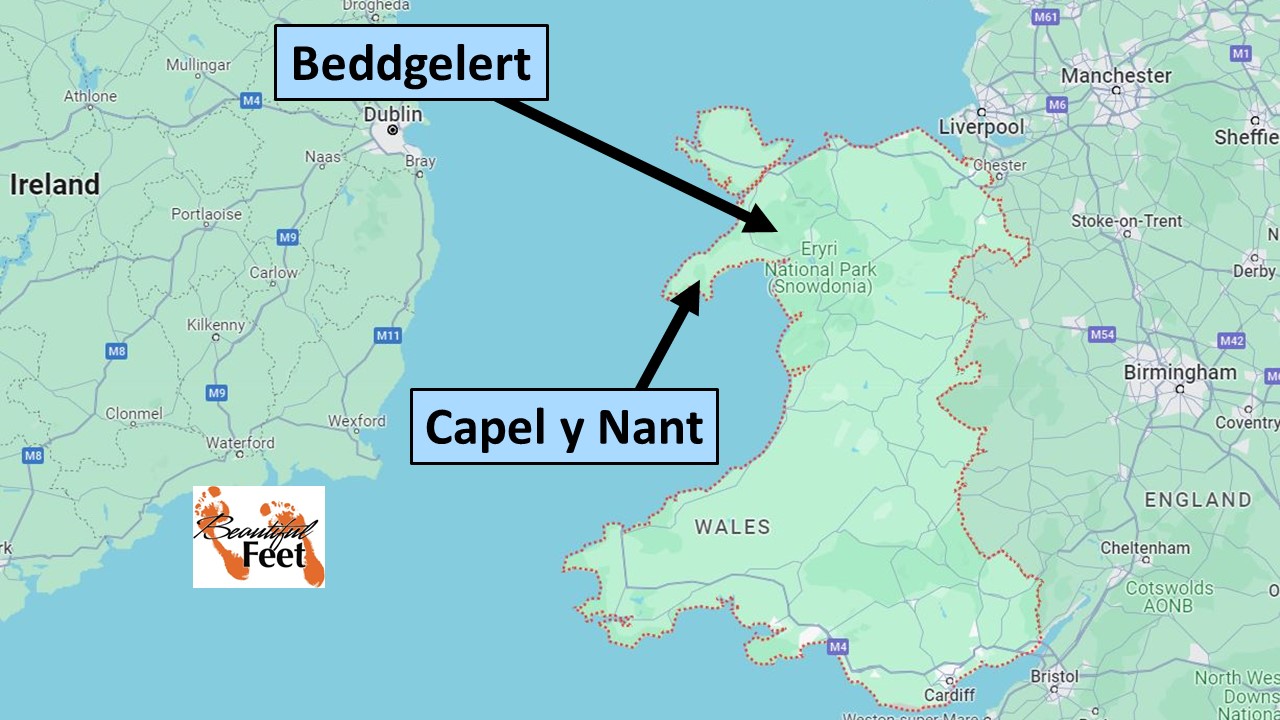
Two locations where the revival got its start
The Revival’s Foundation in Beddgelert
The Calvinistic Methodist Churches in a given region, with small congregations and often without a church building, would hold monthly meetings to provide governance to the respective churches. Elders from these churches would be present, representing their congregations.
One of these meetings was held toward the end of January 1817. At this meeting, an elder representing the church of Capel y Nant shared about the reviving work that had been taking place during the previous months.
An elder from the church at Beddgelert was present, becoming greatly moved by the report coming from the elder at Capel y Nant. He then determined to share that news with his congregation in Beddgelert. A meeting was called for the congregation, and the news was then shared. This led to private and congregational prayer for revival for the Beddgelert church.
Reviving at the Beddgelert Church
The congregation at the Beddgelert church had been praying for revival, beginning in January 1817. By the spring and early summer, they saw an increase in church membership. Though it was only four people, that was profound for a congregation that hadn’t seen an increase in church membership for over 25 years.
On a Sunday evening in August 1817, a remarkable preaching service took place. The location was a farmhouse on the southern slope of Snowdon, the highest mountain in Wales. The area has been known as as Hafod y Llan since the 12th century. The farm is still used today and is also a camping and hiking resort area.
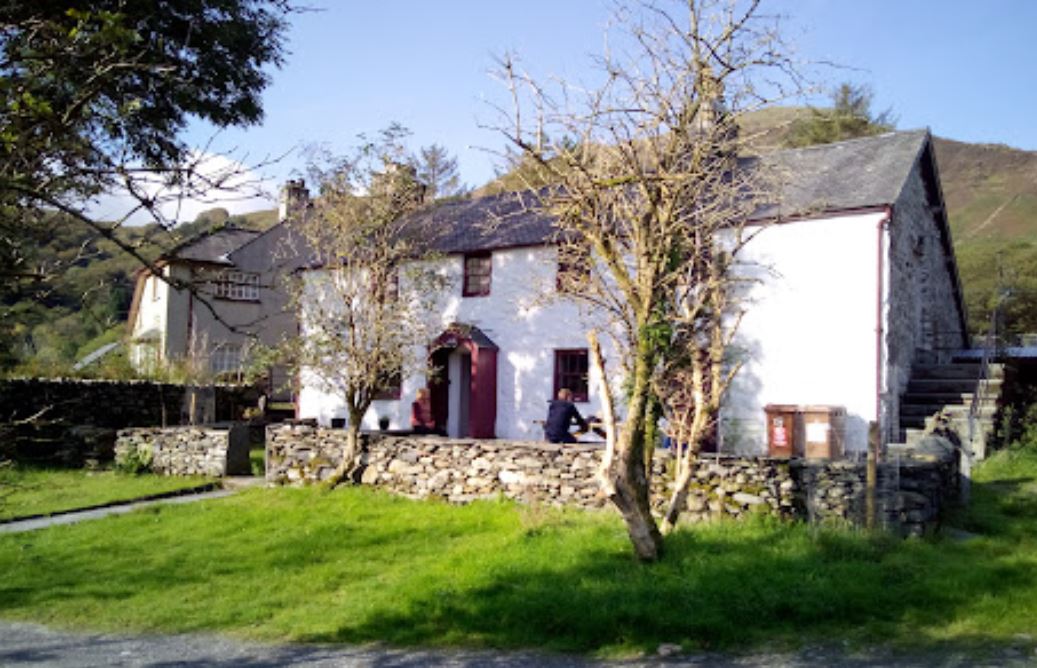
Hafod y Llan farmhouse, called “Hen Dy” (old house) where the August 1817 service was held.
Rev. Richard Williams, described as an ordinary preacher, was speaking that Sunday evening in August of 1817 to a farmhouse full of “lifeless and indifferent” people. Fifteen minutes into his sermon a change occurred. Rev. Robert Ellis, who was present, described it this way:
It was awful and impossible to describe. For although it was Richard Williams that was speaking, yet somehow it was not Richard Williams; the voice was not his…and the sermon was not his sermon! The preacher had his own sermon on the text and had preached it frequently before. His thoughts in that sermon were instructive, but it was not the old sermon that came out now but a completely new sermon, one he did not possess beforehand and one he could never again afterwards get hold of.
Someone else was speaking to the conscience of the congregation and the old preacher lost himself in it.
That packed farmhouse was immediately filled with the sense of God’s presence. Those present, and even the young people who were next door, became overwhelmingly conscious of their sin and God’s holiness. This severe conviction of sin led some to weep and cry profusely and uncontrollably. At the same time, others were praising God and rejoicing in the mercy of grace they had already received.
At the end of his sermon, Williams suggested a hymn to sing, but the people remained in silence, arrested with fear, having come face-to-face with God. On their walk home, there was somberness and silence. Richard Williams himself stated that there was such a free flow of thoughts and words coming out of his mouth that he doubted he had even preached and felt as though he were just listening to someone else.
That week the community was alive with conversation about what had happened that Sunday night. The following Sunday evening, there was a prayer meeting held at the same farmhouse. Two teenage girls, wanting to have a good laugh, made plans to attend the prayer meeting to mock, but their lives were changed, and they walked home crying out to God with loud wailing, pleading for mercy.
This was the start of the revival that spread through northern Wales for five years.
The Seiat
During this era, the Welsh held a special sharing or fellowship meeting called a seiat. These meetings included prayer and Bible readings, but they were primarily composed of people sharing experiences from their relationship with God and telling others how God was working in their lives. The meetings also involved discussing how to live daily, fighting against the flesh and demons.
The Remarkable Seiat
About a month after the astounding meeting at the farmhouse, a remarkable seiat was held in the chapel in Beddgelert.
At midday early in the week, two elders were present to lead the meeting. They were resting in the home connected to the chapel, waiting for the meeting to start. One of the elders opened the door to see if the people had arrived and was startled to find the chapel filled. This was very unexpected, as a regular seiat never generated that much interest. The elder then turned to the other and said:
It is certain that the people have misunderstood; they are expecting a sermon; the chapel is full and all the people of the parish [county] are here.
The two elders went to the chapel and gave a Bible reading. As a hymn was sung, an overwhelming presence of God led many to begin crying out for mercy, while others celebrated, rejoicing in their salvation. After a period, the people were encouraged to return home, and as they did, they spread the news of what had occurred throughout the region.
Outpouring in the Beddgelert Sunday School
By the latter part of September 1817, the village of Beddgelert had been flooded with revival. The Sunday school class made up of young women had been reading the last chapter of John, and the impact of that reading was so deep that they began weeping and were unable to continue the reading.
A fair was scheduled to be held in Beddgelert on September 21. On the Sunday prior to the fair’s commencement, the congregation was powerfully visited by the presence of God during the Sunday School following the afternoon service.
A little while later, the classes assembled together, and the Sunday School superintendent, who was also a church elder, addressed the school. He warned them about the upcoming one-day fair, which was known for its immorality and worldly behavior. The elder gave a warning to avoid the fair and its evil influences, and at that moment:
The Holy Spirit fell on everyone in the Sunday school, old and young, believer and unbeliever. The weeping filled the whole building; it was intense but quiet and subdued; very few broke out in rejoicing on this occasion. All the people felt the presence of God in the building in a frightening way. One boy ran home to his father, shouting, ‘father, the day of judgment has come!’
Spread of the Revival’s Influence
Following the exceptional outpouring of the Holy Spirit during the Beddgelert Sunday School, the church became filled with local people and those coming from much farther away. The revival began spreading throughout the region to other villages and towns across north Wales.
To address the number of new converts and provide them with the spiritual counsel they needed, two or sometimes three additional meetings were held at the church during the week.
During Church Services
Here are a few common experiences that took place during church services:
► They sometimes lasted up to 6 hours.
► Before the end of sermons, the silence of a typical service could be interrupted by the crying of congregants who were overcome by the conviction of sin.
► Unrestricted rejoicing would break out among those who received the comfort and joy of knowing their sins were forgiven.
Angelic Singing
There were numerous accounts of groups of people in different locations experiencing “singing in the air,” or “heavenly singing.” The first account was reported to have happened on Christmas Eve 1817. This singing wasn’t reported as having occurred during church services, but outside along the roads, in homes, on the job, etc. Descriptions of this singing include:
► It was the “singing of a myriad voices.”
► It was “mesmerizing.”
► “The sound of a thousand and myriad, myriad sweet voices singing—not a particular tune but—a harmony of the most excellent kind, the like of which people have never heard before.”
► “At the beginning it was heard as if it wafted on the wind far away from us so that it could be scarcely heard. It was a weak sound, melodious with different voices and gradually drawing nearer to several of us until it was heard powerfully, clearly and effectively. Now it was like the sound of a great crowd rejoicing or praising.”
► “I hear thousands and thousands of voices.”
The result of hearing such singing was that it contributed powerfully to an even deeper reverential awe of God.
Other Singing
Though the masses weren’t granted the privilege of hearing the angelic singing, they did hear the sound of “Christians singing in their homes, village, and churches, and in the open fields.” At the height of the revival, this singing could be heard everywhere one traveled, day and night.
All of this singing caused people to recognize heaven as being more real than earth.
Preaching and Church ServicesA typical church service would begin with a hymn, followed by a Bible reading and prayer. Another hymn was then sung, and finally, the preacher delivered his chosen scripture passage and then proceeded with his sermon.
The church services could not be simply dismissed as mere emotionalism or mass hysteria. The evidence suggests otherwise. There were documented accounts of many hundreds of conversions to Christ and joining churches. Additionally, the preaching was said to be accompanied by the powerful and moving presence of God.
The Rev. David Jones (1805-1868), who was a teenager at the time of the revival, recounted his experience of one of Rev. Ebenezer Morris’s’ sermons (1769 -1825). Here’s what he had to say:
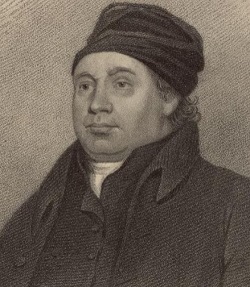
Rev. Ebenezer Morris
I never heard the like of it in power and authority before or afterwards. The great crowds of people were crying and weeping…and the preachers on the stage were seen moving to and fro in utter confusion, crying and rejoicing. It is impossible to describe that magnificent scene.

Dolwyddelan location on right
Dolwyddelan before the Revival
Before the revival swept through the small village of Dolwyddelan, few residents consistently practiced their Christian faith. The dedicated few, however, yearned and prayed for a spiritual awakening in their community.
Dolwyddelan boasted an Independent (Congregational) church established in the early 1800s. Despite lacking a dedicated building until 1826, the congregation held services in homes or in the open air.
Extraordinary Prayer in Dolwyddelan
Beginning in early 1817, the few believers in Dolwyddelan began holding prayer meetings from house to house. This initiative came after a period where children and young people had already been holding their own meetings on Tuesday evenings, separate from the adults. Now, however, a powerful development emerged: the adults were deeply moved by the fervor of the children’s prayers, inspiring them to join with them. Their unified and fervent prayers for revival subsequently spread throughout the area.
The Revival Arrives in Dolwyddelan
The revival arrived in Dolwyddelan in 1819. Rev. David Jones, then a young participant of just 14 years old, was among the youth who had fervently prayed for its arrival. During a prayer meeting held in a home, he stood atop a table to ensure his voice could be heard by all present, and it was from this position that he uttered the following prayer:
“You have given us some drops, O give us the mighty rain. O great Lord, rend the veil, destroy the covering.”
He prayed that three times, until everyone in the house shouted and jumped uncontrollably, their hearts ablaze with love and praise to God.
David Jones years later wrote:
It is difficult for anyone who saw that revival [in Dolwyddelan] to ever forget it. It was very extensive and extremely powerful. Many times, I saw strong, thoughtless, even trembling and pale people paralyzed with fear, then falling to the ground as if they were dead.
Phenomena Associated with the Revival
The Calvinistic Methodist revivals, beginning in the 18th century during the First Great Awakening, were marked by various phenomena. These phenomena continued into the 19th century. Some critics have dismissed the emotionalism, or “enthusiasm,” as it was then called. However, similar displays of emotion were present in Congregational and Baptist churches as well.
These emotional expressions included:
► Shouts of praise would erupt even during the preaching.
► Shouts of “Amen” and “Hallelujah” often punctuated the sermons.
► Uncontrolled weeping due to powerful conviction of sin.
► Jumping or leaping with shouts of joy.
► Trance-like states were experienced on some Sunday evenings at a church in Caernarfon. This occurred among a group of young men who would stay after the service, and it was said that they were “lost in a trance of love.” Others would stay and observe, gathering around these young men, “listening in joy and tears.”
Defense of Revival Phenomena
The Welsh minister and historian, William Williams (1817-1900), defended these phenomena with these words:
It is certain that thousands of those who were thus excited, and who expressed their feelings in cries of distress, and in shouts of gratitude, underwent at the time the great change, and proved themselves for the remainder of their lives to be new creatures.

Locations in North Wales mentioned in this account
Revival Spreads into North Wales
The revival surged northward, rapidly engulfing Anglesey and Denbighshire. The Calvinistic Methodist churches experienced explosive growth during this period, with thousands flocking to join congregations across the country. Here is what Rev. John Elias wrote on October 26, 1822, regarding the revival’s spread in Anglesey:
The revival goes on very delightfully in this island [Anglesey]. The kindness of the Lord toward us is wonderful. His visits and the convictions under the Word are truly powerful. Very wild and hardened sinners are alarmed and converted; multitudes are made willing in the day of Christ’s power. I have had the privilege of receiving hundreds into church-communion. I received one hundred at once in a certain place; in another place fifty; in another thirty, and in another thirty, and many in several other places. Besides, other ministers have received a great many into the church. This is the Lord’s doing.
Visitors to Beddgelert Caught Fire of Revival
The revival in Beddgelert became a beacon, attracting visitors eager to witness its transformative power firsthand. These visitors weren’t just observers; they became active participants, catching the “fire” of revival themselves. Upon returning to their home churches, they carried the fire of revival, igniting similar revivals in their own communities.
Beddgelert Believers Carried the Fire to Other Locations
The believers in Beddgelert weren’t content to keep the revival’s fire burning within their own village. They actively sought to spread it to others. One way they achieved this was by forming ministry teams. These dedicated groups would travel on foot to different towns, holding prayer meetings that served as embers to ignite similar flames of spiritual awakening wherever they went.
Revival Spread through Association Meetings
Another method for spreading the revival fire was through Association meetings, essentially four-day church services similar to camp meetings. These gatherings drew passionate crowds, with people willing to walk up to 40 miles to attend. The journeys themselves became testaments to their faith, filled with singing, prayer, and mutual encouragement.
Held in locations like Bala, Pwllheli, and Caernarfon, these Associations served a crucial purpose. They brought people from various regions together, fostering a sense of community and providing a platform to share revival experiences. This exchange of experiences ignited a spark in those from areas yet untouched by the revival’s flames.
Results of the Revival
The revival’s impact was undeniable. In the Beddgelert church alone, over 200 new members were added. Numerous congregations across North Wales witnessed a surge in membership. Notably, the revival also served as a catalyst for ministry, with many prominent ministers experiencing conversion or finding their calling during this period.
Primary Source
► The Beddgelert Revival by Eryl Davies
► Beddgelert Revival Video by Beddgelert 1817
Secondary Sources
► A Descriptive and Historical Sketch of Beddgelert by James Bransby
► Beddgelert 1817 Revival by Snowdonia Christian Fellowship
► Revival Comes to Wales by Eifion Evans
► Sunday School by Wikipedia
► The First 50 Years of the Sunday School by W. H. Watson
Return to List of Revival Stories
Chet & Phyllis Swearingen
(260) 920-8248
romans1015@outlook.com
Beautiful Feet
P.O. Box 915
Auburn, IN 46706

